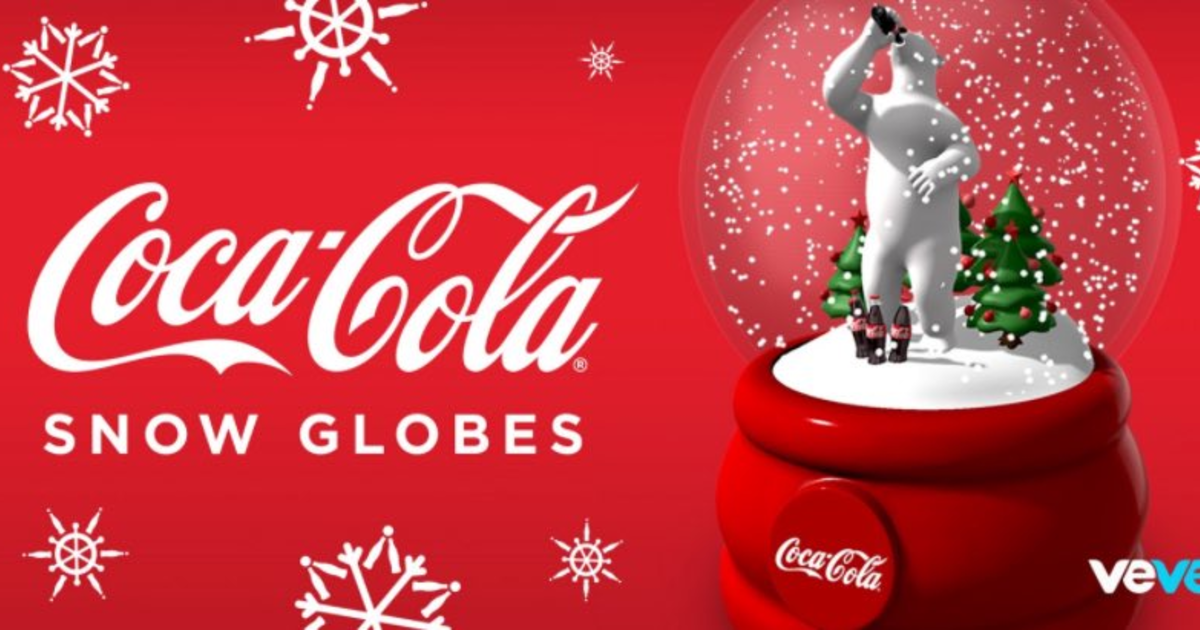Top 10 NFT marketing initiatives by leading brands in 2021 – Business Chief
When it comes to marketing brands, nothing has created quite so much excitement as NFTs (non-fungible tokens) over the past year.
Since the buzz created by the auctioning off of the first digital-only NFT at Christie’s (a JPG file by Beeple aka Mike Winkelmann that sold for US$69.3m), brands have been digitally experimenting in the metaverse to see how they can be part of the NFT pie.
Designed as digital assets that can’t be replicated, like owning an original work of art online, NFTs are created using blockchain technology meaning they have unique identification codes.
And they are increasingly being used by brands – both classic and cutting-edge – as part of their marketing mix, with food (Taco Bell, McDonald’s, Campbell’s) and fashion brands (Louis Vuitton, Dolce & Gabbana, Nike, Gucci) leading the way.
Some brands are releasing NFT collectables or limited editions as a way to open up new revenue streams, build brand loyalty or raise money for a good cause, while others are using them as a way to boost their image, tell a story or reach new audiences, snd still others for live event ticketing.
And while they certainly gained momentum last year, they are expected to become mainstream in 2022 and a major player in the trillion-dollar marketing industry in 2022 and be used increasingly by marketers to create unique brand experiences, increase brand awareness and encourage interaction.
From toy company Mattel (Hot Wheels brand) to beauty giant Estée Lauder (Clinique brand) and film production company Warner Bros. (Matrix film), brands are using NFTs in innovative ways to market new launches, promote milestones or anniversaries, boost social media following, support a campaign, or show support for a charity or movement.
We highlight the top 10 brand uses of NFTs in marketing in 2021.
One of the first sportswear brands to leap on the NFT bandwagon, in July, Asics’ Sunrise Red collection includes limited-edition digital sneakers (each of the collection’s nine silhouettes) designed in collaboration with various digital artists. Described by the sporting brand as a “celebration of sport and a first step in building a future where digital goods inspire physical activity”, proceeds raised from the 189 digital assets (20 of each silhouette) was reinvested to the artists via Asics’ Digital Goods Artist-in-Residence Program. A limited-edition metallic gold colourway was also released.
In October, Clinique unveiled its first-ever set of limited-edition NFTs titled MetaOptimist, making it the first of the Estée Lauder Companies brand to release NFTs. Rather than using the bidding system, most common in NFTs, the global beauty brand ran a competition to give away three NFTs to members of its Smart Rewards programme who share stories of optimism and hope for the future on social media with hashtags #MetaOptimist #Clinique #Contest. Winners also received free complimentary products.
In March, fast food brand Taco Bell auctioned 25 NFT GIFs on NFT marketplace Rarible as a way of driving brand awareness while supporting a good cause. The series of NFTs commemorated the iconic Taco dish and combined the digital and physical worlds with the buyer of the original ‘Transformative Taco’ receiving a US$500 electronic gift card to spend as they please. While each GIF started at a bidding price of US$1, all 25 NFTs were sold within 30 minutes and went for thousands of dollars each with one gong for as much as US$3,646. The proceeds were used to support the Live Mas Scholarship, which supports young people’s education.
In the run-up to Christmas 2021, leading toy manufacturer Mattel rolled out NFTs in its highly collectable Hot Wheels brand, releasing 40 different NFT Hot Wheels designs for consumers in November with a starting price of US$15 for each. The products included packs of four or 10 NFTs featuring an animated iconic design of the brand’s cars. There were four levels of scarcity, with more than 5,000 NFTs redeemable for a physical version of exclusive Hot Wheels, with each collector having a 5% chance of landing on a special vIRL token and owning a limited-edition real-life die-cast vehicles.
To celebrate International Friendship Day on July 30, Coca-Cola released a series of four NFTs, animated, one-of-one digital artworks delivering multi-sensory experiences – unlocking surprise items upon purchase for the first owner. Designed to drive anticipation and add entertainment value, the surprises included a ‘Coca-Cola Bubble Jacket Wearable’ that can be worn in virtual reality platform Decentraland, the ‘Coca-Cola Friendship Card’ inspired by the original 1940s artwork, among others. Auctioned over 72 hours as a single ‘loot box’, the winning bidder also received an in-real-life, fully stocked Coca-Cola refrigerator. All proceeds from the NFT auction (US$575,883) went to Special Olympics International. Following this, Coca-Cola issued a new set of four branded NFTs in December 2021, a collection of festive digital collectable snow globes featuring falling snow and the iconic Coke polar bears, as part of a blind box offering, meaning you don’t know what collectable/rarity you have acquired until after your successful purchase.
Designed to commemorate the return of the fast-food restaurant’s limited collection McRib to its menu in November, McDonald’s delivered its first-ever NFT promotion. The world’s largest restaurant chain issued a limited number of NFTs (dubbed MCNFT) as part of a virtual collectable art collection featuring the McRib as a way of creating excitement about the product’s temporary return and limited availability. The collection of 10 individual McRib NFTs were only available to those who retweeted the brand’s invitation, which more than 21,000 people did within just a few hours and nearly 93,000 had done by the start of 2022. Now, that’s good marketing.
The designer sunglasses brand is setting its sights on being a big player in the metaverse in 2022 and beyond. Not only is the brand collaborating with Meta (formerly Facebook) on AR glasses, but in October last year, it entered the NFT space, auditioning off its first, and only NFT featuring the brand’s iconic Aviator sunglasses. Created by German artist Oliver Latta, renowned for his provocative 3D motion designs, the NFT was auctioned on OpenSea with the proceeds going to the Italian Art Trust.
In order to reach its young audience, American heritage and sportswear brand Original Penguin partnered with TikTok influencer artists in the creation and delivery of its first-ever NFT auction, which it held in November. Marking the first time a fashion brand has commissioned TikTok videos to be the actual NFT asset, eight augmented reality-powered NFTs, three created by the brand and five from TikTok influencers were auctioned with interested buyers able to view the NFTs in AR (ie, walking along a beach lined with virtual penguins) before committing. All proceeds went to Free Arts NYC, a nonprofit that helps youth through art and mentoring programs.
In November, the NFL announced that fans could receive complimentary virtual commemorative tickets as a limited-edition NFT. Created in collaboration with Ticketmaster, those fans who attended select games from Thanksgiving up until the end of the 2021 season were eligible for an NFT ticket, which could then be traded or sold.
Italian fashion brand Gucci took to the digital runway in June auctioning off a newly minted NFT inspired by its Fall/Winter 2021 collection in an online auction hosted by Christie’s. Described by Christie’s as a mix of “dream-like landscape and effervescent energy”, the NFT draws from Aria, a four-minute film produced to accompany a runway show and is formatted as a three-channel video playing on a loop. The week-long auction ended with the final sale price of US$25,000, the proceeds of which were donated to UNICEF USA to support the non-profit’s COVAX initiative.
Powered by



